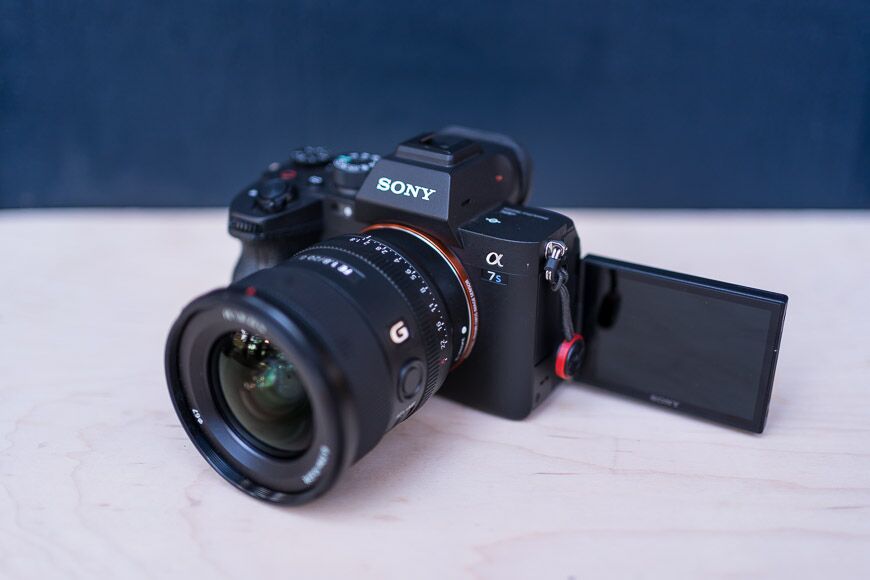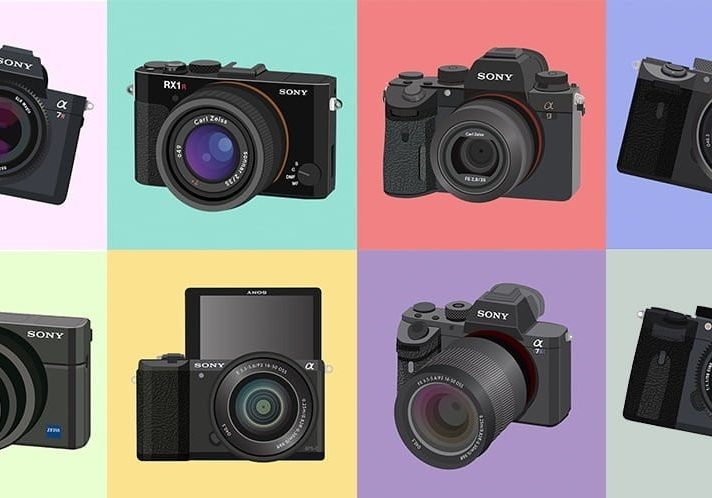
Best Sony Camera for Photographers & Film Makers
Dive into a curated list of top-performing Sony cameras, showcasing cutting-edge technology and unmatched image quality.
Camera Gear Guides | Camera Guides | By Mark Condon and Ash Darrow, Greg Cromie | Last Updated: February 20, 2025
Shotkit may earn a commission on affiliate links. Learn more.
Sony is a household name thanks to decades of groundbreaking audio, visual, and gaming tech enhancing our entertainment experiences.
The Japanese brand is also renowned for its industry-leading digital camera technology, especially in enthusiast and pro-level markets.
Sony Alpha digital mirrorless cameras represent some of the best and most critically acclaimed advancements in modern camera capabilities.
However, at a casual glance, almost every Sony Alpha camera looks alike, and it’s often tricky to understand which is best for you and your skill level.
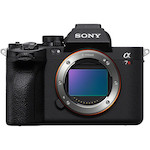
Super-versatile camera offering an impressive 62.5MP sensor, fast autofocus system, and all-round stunning image quality.
Fear not! Our guide to the best Sony camera for photography and videography covers the current-gen range of Sony digital cameras, their specs, pros, cons, and who they’re targeting.
Furthermore, every camera receives a complete review to detail its performance outcomes, key features, best applications, image quality, and video output.
Sony has the best camera for your needs, regardless of your skill level or budget. Let’s dive in!
What Are the Best Sony Cameras?
| Image | Product | Features | |
|---|---|---|---|
 | Sony a7R VOUR #1 CHOICE |
| Check AMAZON Price → Check B&H Price → |
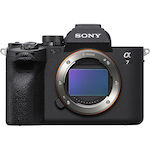 | Sony a7 IVBEST FOR ENTHUSIASTS |
| Check AMAZON Price → Check B&H Price → |
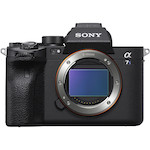 | Sony a7S IIIBEST FOR VIDEO |
| Check AMAZON Price → Check B&H Price → |
 | Sony a9 IIIBEST FOR SPORTS AND WILDLIFE PHOTOGRAPHY |
| Check AMAZON Price → Check B&H Price → |
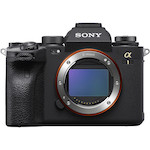 | Sony a1BEST ALL ROUND |
| Check AMAZON Price → Check B&H Price → |
 | Sony a7C IIBEST ENTRY LEVEL CAMERA |
| Check AMAZON Price → Check B&H Price → |
 | Sony ZV-E10 IIGREAT FOR CONTENT CREATORS |
| Check AMAZON Price → Check B&H Price → |
 | Sony FX3 HIGH QUALITY |
| Check AMAZON Price → Check B&H Price → |
 | Sony FX30GREAT FOR BEGINNERS |
| Check AMAZON Price → Check B&H Price → |
 | Sony a6700GREAT VALUE |
| Check AMAZON Price → Check B&H Price → |
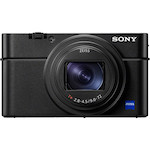 | Sony Cyber-shot DSC-RX100 VIIBEST ALL ROUND POINT AND SHOOT |
| Check AMAZON Price → Check B&H Price → |
Sony offers a solid lineup of digital cameras to suit every genre, skill level, and budget.
The Sony brand and digital mirrorless camera range speak to the quality, durability, and performance of each and every camera in the Alpha range.
Of course, you don’t get quality for free! Sony cameras are typically priced to suit those who demand precision, speed, and output above all else.
They deliver in those categories while offering class-leading video output, highly customizable command settings, and well-thought-out ergonomic considerations.
Also check out our guide to the best Sony lenses here.
Sony a7R V – Our #1 Pick
Sensor: 62.5MP Full Frame EXMOR R BSI CMOS
Dimensions: 131.3 x 96.9 x 82.4mm (5.2 x 3.8 x 3.2″)
Weight: 723g (1.6lb)
Release: December 2022
- High-resolution 62.5MP image sensor!
- Pro-grade output and speed
- Remarkably fast autofocus and tracking
- 5-axis 8-stop image stabilization
- 8.2K at 24p / 4K at 60p
- Blinding 9.44m dot EVF
- Requires a small mortgage to purchase
- Noticeable noise at high ISO
- Video limitations and compromises
- Large files will slow your workflow
The Sony A7R series of cameras has been the go-to choice for many enthusiasts and professional photographers.
Each A7R generation offers a highly capable and reliable workhorse feature set with outstanding image quality and performance.
Sony’s A7R V draws from its heritage to offer one of this generation’s most impressive Sony digital mirrorless cameras.
It’s hard to ignore the 62.5MP image quality captured by the Full Frame EXMOR R BSI CMOS image sensor.
Processing power is just as impressive, thanks to the BIONZ XR Processor, which delivers pro-grade readout speeds and class-leading autofocus performance.
The Dual CFexpress Type A/SD card slots greatly assist in readout performance.
The Sony A7R V also boasts 5-axis image stabilization, which delivers up to 8 stops of light in slow shutter speeds or low-light situations.
As one of Sony’s flagship models, the camera is exceptionally robust and ergonomically ideal for pro shooters.
The camera design’s standout features include a deep grip, customizable buttons, command dials, and one of the industry’s best flip-out/tilting touch screens.
The rear 3.2″ 4-axis multi-angle LCD delivers a bright and clear 2,095K of image resolution.
If you think that’s impressive, you’ll love the 0.64″ OLED EVF, which has a 0.9x magnification and a blinding 9.4M dots of image resolution.
By now, you should be getting a sense of the Sony A7R V’s amazing quality and how it’s still one of the best pro-grade bodies on the market.
Sony has a well-earned reputation as an autofocus speed and accuracy leader.
The Sony A7R V is no exception. It delivers lightning-fast phase detection autofocus paired with real-time subject recognition and tracking based on seven target types.
If the 61MP image resolution isn’t enough for you, Sony also offers pixel-shift image capture, which records 16 images and, once combined in post-processing, forms a staggering 240.8MP single image.
Leaving aside the pixel-shift option, the A7R V produces exceptional image quality, faithful color reproduction, and exceptional dynamic range.
It’s worth pointing out that working with the colossal 62.5MP (or massive 240.8MP) image files will test your computer’s processor and RAM.
While it’s more than capable of working in low-light situations, the A7R V does suffer a little from excessive noise at the top end of the ISO range. It’s not a deal breaker, and the situations where this will be a challenge are limited.
Given that the Sony A7R V is primarily a photography camera, it also offers a more-than-reasonable 8.2K at 24p or 4K at 60p 10-bit video capture using the full-frame sensor.
So what does a pro-grade Sony digital mirrorless camera cost, with such impressive features and performance?
The Sony A7R V retails for around US$3,900.00. Yes, that’s a lot of money. However, it’s a flagship body designed to suit high-level enthusiasts’ and pro-grade commercial photographers’ demands and creative needs.
Quality of this level doesn’t come cheap! The Sony A7R V is a true workhorse that impresses at every turn.
I always look for the fun factor in any camera or lens I review.
As for the Sony A7R V, there’s fun to be found in composing stunning landscapes, portraits, or architectural shots and marveling at the insane levels of image detail and dynamic range.
Sony a7 IV – Best for Enthusiasts
Sensor: 33MP Full-Frame Exmor R BSI CMOS Sensor
Dimensions: 131.3 x 96.4 x 79.8mm (5.2 x 3.8 x 3.1″)
Weight: 658g (1.4lb)
Release: October 2021
- Great mid-level offering
- Better ergonomics over the previous generation
- Fast autofocus and tracking
- Stunning image resolution
- 4K at 60p video but with a 1.5x crop
- Substandard LCD resolution
- Focus breathing compensation crops frame
- Noticeable rolling shutter
The Sony A7 IV is one of the best mid-range photography and videography digital camera options.
The Goldilocks of the Alpha range produces exceptional image quality and current-gen video output, ideal for most enthusiast-level visual creatives.
Sony’s A7 IV packs an impressive 33MP Full-Frame Exmor R BSI CMOS sensor powered by the BIONZ XR processor – the same flagship-level chip as the A7R V.
Fast readout speeds, 5-axis image stabilization, and CFexpress Type A/SD (UHS-II) and SD/SDHC/SDXC (UHS-II) slots further support the sensor and processor combo.
The magnesium-alloy chassis and extensive weather-sealing make the A7 IV incredibly durable and capable of working in extreme conditions.
Consequently, it’s a great travel camera for anyone looking to enhance their holiday snaps.
The deep grip more than compensates for the camera’s size and weight, especially when paired with a heavier prime or long zoom.
What’s also impressive is the range of customizable function buttons and command dials at your disposal.
The Sony A7 IV features a reasonable 3″ 1.03m-dot Vari-Angle LCD with a touch interface and flip-out system, making it suitable for selfies and vlogging.
The EVF boasts a large, bright, and punchy 0.5″ OLED that delivers 0.78x magnification and 3.68M dots of image resolution with a 120fps refresh rate.
It’s an impressive EVF that beats the specs of many pro-grade bodies from other brands.
The A7 IV features Sony’s Fast Hybrid AF system, incorporating 759 phase-detection points and super-quick autofocus speeds.
The autofocus system, available in photography and video modes, harnesses the power of Real-Time Eye AF to recognize and track humans, animals, and birds.
Sony’s AF Assist is also available. It allows users to seamlessly switch from manual to autofocus while recording without stopping production.
Speaking of video quality, the Sony A7 IV delivers oversampled UHD 4K 30p XAVC HS 10-bit internally to the UHS-II speed cards.
The 4K 60p option is also available; however, this is with a substantial 1.5x Super 35 frame crop.
For video enthusiasts, the A7 IV offers a range of color and gamma controls, including S-Cinetone for pleasing skin tones, Hybrid Log-Gamma, and S-Log3.
While the Sony A7 IV is almost due for a refresh, it’s got a lot on offer for a more-than-reasonable asking price of around US$2,500.00.
A new iteration should address some of the current generation’s shortfalls. For example, improving the rolling shutter and focus breathing compensation could address many of the limitations experienced in video recording.
Putting aside the minimal cons of the Sony A7 IV, it’s undoubtedly a powerful and impressive offering that ticks almost all the boxes to suit an enthusiast-level market.
As for the fun factor, the A7 IV is an impressive mirrorless camera that accommodates a staggering number of Sony and third-party lenses to suit every possible genre.
Sony a7S III – Best for Video
Sensor: 12MP Full-Frame Exmor R BSI CMOS
Dimensions: 128.9 x 96.9 x 80.8mm (5.1 x 3.8 x 3.2″)
Weight: 699g (1.5lb)
Release: October 2020
- Video-centric with pro-features
- 4K at 60p video without crop
- Limitless video recording
- 9.44M dot EVF resolution
- 5-axis image stabilization
- Dual CFexpress Type A / SD card slots
- 12MP still images
- Lacks a 6K mode
- Pricey
Yes, it’s true; the Sony A7S III features a 12MP Full-Frame Exmor R BSI CMOS image sensor.
By today’s standards, where sensor resolution typically sits at 40MP, 60MP, or even 102MP, a 12MP image sensor feels lackluster at best!
However, since the Sony A7S III is a videography-centric digital mirrorless camera, the 12MP image sensor perfectly suits high-grade video capture.
Let’s cut to the chase: the Sony A7S II is a video powerhouse capable of internally recording UHD 4K at up to 120p 10-bit 4:2:2.
The smaller MP Exmor R BSI CMOS sensor and BIONZ XR processor deliver exceptional image quality with reduced noise and an uncompromised ISO range of 80-102400 with an extended range of 40-409600.
Thanks to the A7S III’s design, heat management and dissipation enable unlimited record times for long-form video formats.
Another supportive feature is the 5-axis image stabilization that works in stills and video modes for optimal image clarity.
As for the build quality, the weather-sealed, magnesium alloy body is durable and offers excellent ergonomic support.
It’s well-balanced and pairs effortlessly with the wide range of Sony G lenses for video capture.
One of the Sony A7S III’s most impressive external features is the QXGA OLED Tru-Finder EVF, which boasts a staggering 9.44m-dot resolution and 0.9x magnification.
Along with the 120fps refresh rate, the EVF is a masterclass in digital optics and screen technology.
The fold-out rear screen is a 3″ vari-angle LCD touch panel with a respectable image resolution of 1.44 M dots.
Thanks to the dual CFexpress Type A / SD-type UHS-II memory card slots, the A7S III’s overall performance and speed are optimized.
Given that the Sony is a video-centric camera, it’s no surprise that it offers an extensive range of ports and terminals, including a full-size HDMI, USB 3.2 Gen 1 Type-C, and 3.5mm mic and headphone ports.
When it comes to focus performance, the Sony A7S III is incredibly impressive, thanks to its lightning-fast response time and subject tracking accuracy.
The A7S III features Sony’s Fast Hybrid AF System, which combines 759 phase-detection points and 425 contrast-detection points to optimize performance in all lighting conditions.
Furthermore, Sony boasts AI-based real-time Tracking for moving subjects and Real-time Eye AF for targeting humans and animals.
It’s undeniably fast and accurate and works just as well in stills mode as in video.
One of the only let-downs with the videography-ready Sony A7S III is the lack of a 6K recording mode. However, given the A7S III launched in late 2020, 6K wasn’t as widely available or reliable at the time.
I’m sure the next Sony A7S model will surprise and delight with current and next-level video features and performance.
The Sony A7S III currently retails for around US$3,500.00, and while that’s a lot of money for a 12MP camera, its video-specific output and performance prove its value.
It borrows much from the Sony FX Cine range of pro-grade video cameras.
Enthusiasts and professional videographers looking for pro-grade video output in a relatively compact form need look no further.
Sony a9 III – Best for Sports and Wildlife
Sensor: 24.6MP Full-Frame Global Shutter
Dimensions: 136.1 x 96.9 x 82.9mm (5.4 x 3.8 x 3.3″)
Weight: 618g (1.4lb)
Release: Early 2024
- Professional workhorse ideal for sports
- Global electronic shutter
- Up to 120fps
- 9.44M dot EVF and 2M dot LCD
- 4K at 120p from 6K video
- Exceptional image quality
- Lighting fast autofocus and tracking
- It’s gonna cost you!
- Struggles at high ISO
- Battery life is questionable
If it’s speed you need, then Sony has the ultimate digital mirrorless camera for you!
With its 24.6MP Full-Frame Global Shutter, the Sony A9 III is the ultimate pro-grade sports, wildlife, and photojournalism camera.
Upon launch, Sony proudly claimed the A9 III boasted the world’s first global shutter in a mirrorless camera.
A global shutter exposes the entire sensor simultaneously rather than incrementally as the shutter curtains open and close. As a result, the image is captured instantly and eliminates distortion and rolling shutter.
The 24.6MP full-frame global shutter allows breakneck readout speeds and a crazy 120fps RAW burst mode without excessive buffering to the dual CFexpress Type A / SD (UHS-II) card slots.
The BIONZ XR processor and AI Processing Unit power the system for optimal speed and multitasking, especially when AF and tracking are active.
The Sony workhorse features an impressive 8-stop 5-axis In-Body Image Stabilization system and the ability to sync flash speeds without restrictions – or at least until you hit the cap of 1/80,000 of a second!
As a result, you can shoot fast-paced action in any lighting conditions and achieve exceptional flash sync control and image capture.
While the 24.6MP image sensor isn’t the boldest by today’s standards, there’s no denying the detail, clarity, and dynamic range of every RAW file.
Sensor speed isn’t the only impressive feature of the Sony A9 III—there’s also much to be said about the autofocus performance.
The A9 III boasts a lightning-fast focus system with subject tracking, featuring 759-point phase detection in stills mode and 627-point phase detection in video mode.
Speaking of video, the A9 III captures full-frame 6K internally cropped to deliver crisp and clear UHD 4K at up to 60fps. Alternatively, a super-smooth full-frame 4K at up to 120fps is possible.
The a9 III captures and downsamples the full 6K image area to produce high-quality UHD 4K video up to 60 fps. It can also record 4K up to 120 fps with no crop.
High-quality video is captured in 10-bit 4:2:2 internally or 16-bit RAW via the full-sized HDMI port to a compatible external monitor.
Sony has baked-in S-Log3 and S-Cinetone color profiles for optimal workflow and post-processing editing.
Being a pro-journalist-level mirrorless camera, the Sony A9 III is bigger and heavier than most Sony bodies in this guide. However, despite the extra bulk, it’s comfortable and offers excellent ergonomic considerations that elevate the photography experience.
For example, the A9 III features a large and bright 3.2″ 2.1M-dot 4-axis multi-angle touchscreen – the same as the one found on the Sony A7R V.
It also boasts one of the best EVF systems, with a large 0.64″ OLED panel cranking out 9.44M dots of image resolution and a maximum refresh rate of 240fps.
Unfortunately, all that performance and speed comes at a cost – to your wallet and the battery performance.
The Sony NP-FZ100 Rechargeable Lithium-Ion battery is rated to capture up to 400 shots, but high-speed shooting significantly reduces that.
As for the cost to your bank balance, the Sony A9 III will set you back around US$6,000.00. It’s a beast of a camera with a beastly cost to your lifestyle!
Pro-grade sports and wildlife photographers, or those in the photojournalism space looking for reliability and performance, shouldn’t hesitate to spend that much cash, however, as the results will be worth it.
Sony a1 – Best All Round
Sensor: 50MP Full-Frame Exmor RS BSI CMOS
Dimensions: 128.9 x 96.9 x 69.7mm (5.07 x 3.81 x 2.74″)
Weight: 737g (1.6lb)
Release: January 2021
- It is THE Alpha!
- Stunning 50MP image resolution
- Intuitive menu system – finally!
- Astounding dynamic range
- Huge buffer capacity and up to 30fps
- 8K at 30p
- Pixel Shift high-resolution limitations
- Focus struggles with narrow apertures in low light
It’s time to welcome the king, the queen, the ultimate, the cream of the crop, the star, and the best of the Sony Alpha range of digital mirrorless cameras.
The Sony Alpha 1 is THE ALPHA in that it embraces the highest standards, performance, and output that Sony could cram into a flagship body.
Sony’s A1 houses a high-resolution 50MP Full-Frame Exmor RS BSI CMOS image sensor with its integrated memory, fast 30fps RAW readout speeds, and 15-stop dynamic range.
Low-light performance is assured thanks to the 5-axis sensor-shift image stabilization and expanded ISO sensitivity range up to 102,400.
The Sony A1 is powered by the latest enhanced BIONZ XR image processor, which optimizes image quality, video capability, lighting fast focus performance, and fast readouts to the dual CFexpress Type A / SD (UHS-II) slots.
Regarding video capture, the Sony Alpha 1 records a staggering 8K at up to 30p XAVC HS 10-bit 4:2:2 internally from full-frame 8.6K oversampling to ensure ultimate resolution and dynamic range.
In addition, the A1 records a silky smooth 4K at 120p and offers external recording in 16-bit RAW via the full-sized HDMI A port.
The hybrid Sony camera expands upon the videography capabilities with a range of pro-grade codecs, color control formats, and variable recording bit rates.
Sony’s A1 offers blistering fast focus performance thanks to the Hybrid AF systems, which harnesses 759 phase-detection points and 425 contrast-detection areas.
The A1 also incorporates top-tier Real-time Tracking with touch subject selection and reliable animal and human Real-time Eye AF.
Wildlife and bird photographers will celebrate the dedicated Real-time Eye AF Bird Mode to track birds in flight.
Being the ALPHA of the Sony pack, the A1 is built to the highest standards to optimize durability and user experience.
Professional photographers and videographers will also applaud the inclusion of a full-sized HDMI port, RJ45 data output, USB-C port, 3.5mm mic and headphone ports, PC flash sync port, and 5GHz MIMO WiFi.
The Sony A1 is a larger, heavier, weather-sealed mirrorless camera with a deep, comfortable grip and ergonomic interface.
Sony has fitted the Alpha with a brilliant (literally) 0.64″ 9.44m-Dot OLED EVF with a ridiculous 240fps refresh rate.
The rear LCD is less impressive yet less power-hungry, with a 3″ 1.44M dot touch screen. Shooting from the rear screen enables up to 530 shots per battery charge.
Sony’s ALPHA is one of the most impressive digital mirrorless cameras on the market, and it’s fast approaching its fourth birthday.
It begs the question of how and when Sony will top the ALPHA with the next generation. There’s very little compromise in the Sony A1 as it’s a powerful full-frame champion.
At the time of writing this guide, Sony announced the impending release of the new Sony Alpha II flagship camera – stay tuned!
However, at around US$6,500.00, the Sony A1 is not for the faint of heart or those merely interested in photography.
The ALPHA is THE pro-grade flagship hybrid workhorse from the house of Sony.
Sony a7C II – Best Entry Level
Sensor: 33MP Full-Frame Exmor R BSI
Dimensions: 124 x 71.1 x 63.4mm (4.9 x 2.8 x 2.5″)
Weight: 514g (1.1lb)
Release: August 2023
- Affordable full-frame offering
- Stylish design
- Faultless autofocus
- 7-stop image stabilization
- 4k at 60p Super-35 mode
- Excellent image resolution
- Lackluster LCD resolution
- Rolling shutter in Electronic mode
- Video recording limitations
- Less than ideal battery life
Now that we’ve covered the Sony big guns of full-frame mirrorless cameras, it’s time to dial it back a little and cover one of the Japanese giant’s best entry-level offerings.
The Sony A7C II is a second-generation compact E-mount camera with a full-frame sensor and a variety of surprising features and performance outcomes.
The A7C II is one of the most compact full-frame cameras today, measuring 4.9 x 2.8 x 2.5″ and weighing just 1.1lb!
Its size, weight, and adaptability, with the wide range of Sony FE lenses, make it the ideal travel camera or a handy kit for nomadic social influencers.
The Sony A7C II packs a 33MP Full-Frame Exmor R BSI image sensor, powerful BIONZ XR processor, and 5-axis image stabilization, delivering up to 7 stops of light.
Available in black or silver and black, the little weather-sealed Sony is a masterclass in minimal design to retain only the necessary controls and interfaces.
Despite its size, the A7C II offers excellent ergonomics thanks to a deep grip, rear thumb rest, and control placements within easy reach of the right-hand fingers.
Thanks to the top-plate hot shoe and the 180º rotating touch screen, the selfie and vlogging crowd can quickly transform the A7C II into a content creation platform.
The rear screen is a simple yet bright 3″ 1.03M-Dot Vari-Angle LCD panel with a touchscreen interface.
The EVF is small compared to many of the above Sony cameras; however, it offers reasonable outcomes thanks to its 0.39″ OLED with 2.36M dot resolution and 0.7x magnification.
Remember that while these numbers pale compared to a flagship Sony, the A7C II is an entry-level option with a much more affordable price tag.
The sensor, processes, and stabilization combo ensure high-resolution image quality with excellent dynamic range and faithful color reproduction.
Focus performance is incredibly responsive, with quick subject acquisition and tracking, thanks to the 759-point phase detection in stills mode or the 495-point in video.
The camera’s 759 phase-detection points in stills mode and 495 points in video mode, covering 94% of the image area, are enhanced with AI-powered subject recognition performance and real-time tracking.
The Sony A7C II is a hybrid photography and videography camera, so its video capabilities and features will delight visual creatives.
The A7C II records smooth and stabilized full-frame 4K at up to 30p 10-bit 4:2:2 internally without cropping or 4K 60p with a Super35 crop.
The vlog-friendly Sony also offers a subject-tracking feature that auto-crops the frame to keep a subject in a desired position within the composition. It’s a customizable feature that eliminates many of the tricky aspects of video composition.
Another neat feature of the A7C II is that it connects to a suitable computer via USB-C and pairs the camera with a web streaming cam.
At around US$2,200.00, Sony’s A7C II is the most full-frame fun you can have with a compact yet highly capable visual medium device.
Sony ZV-E10 II – Great for Content Creators
Sensor: 26MP APS-C Exmor R CMOS
Dimensions: 114.8 x 67.5 x 54.2mm (4.5 x 2.7 x 2.1″)
Weight: 292g (10.3oz)
Release: July 2024
- Affordable video-centric Sony
- Ideal for vloggers and content creators
- Compact and lightweight
- Great resolution 26MP APS-C image sensor
- Cropless 4K at 30p video
- Directional audio recording
- Excellent battery life
- Separate mic and headphone ports
- No mechanical shutter
- Overheats at highest video mode
- Lacks image stabilization
- Low-resolution LCD
There’s certainly a lot to be said about the benefits and outcomes of a full-frame image sensor. However, full-frame sensor cameras are typically bigger and far more expensive than their APS-C counterparts.
A brilliant example of a digital mirrorless camera optimizing outcomes with a crop sensor is the Sony ZV-E10 II.
The video-centric hybrid shooter packs a 26MP APS-C Exmor R CMOS image sensor, capturing excellent image quality and accurate color rendering.
Sony’s ZV-E10 II is a content creator’s dream camera, thanks to the visual trickery and performance the BIONZ XR processor delivers.
While the E10 II doesn’t offer built-in image stabilization, it does capture impressive and crisp 4K video at up to 60p from oversampled 5.6K full sensor capture.
The videography love continues with the inclusion of S-Cinetone and S-Log 3 color and the ability to apply LUTs and creative look color options to your video while recording.
The compact Sony is brimming with content optimization options, including a live streaming mode via the USB-C port or the 5GHz WiFi streaming protocols and webcam adaptability.
Sony has also baked in vlog-specific functionality, including Product Showcase, Background Defocus, Slow & Quick modes, and Focus Breathing Compensation.
The ZV-E10 II features a forward-directional microphone, dedicated 3.5mm headphone and mic ports, and an enhanced hotshoe interface for optimal audio recording with external microphones.
Autofocus in stills and video is fast and accurate, thanks to a 759-point hybrid phase detection system, fast subject recognition, and Sony’s Real-time Eye AF for humans or animals.
It’s clear that the ZV-E10 II offers many pro features in a compact and highly affordable body.
The compact and lightweight Sony ZV-E10 II, available in black or white, offers reasonable ergonomic comfort while maintaining a very ‘Sony’ design aesthetic. Some of the buttons are a little small and fiddly.
The vlog-friendly camera supports a wide range of Sony E lenses and those produced by third parties—many retailers sell the E10 II in various kits.
It features a reasonable 3″ 1.036M dot articulating touchscreen that’s bright but a little lackluster, as it does not have an EVF.
The Sony ZV-E10 II is probably the most fun you can have with a US$1,000.00 interchangeable lens camera.
Sony has packed many simple yet creative features to accommodate the growing demand for content-creation-focused cameras.
The ZV-E10 II is an essential tool in any visual creative kit.
Sony FX3 Cinema Camera
Sensor: 12.1MP Full-Frame CMOS Exmor R
Dimensions: 129.7 x 84.5 x 77.8mm (5.1 x 3.3 x 3.1″)
Weight: 640g (1.4lb)
Release: March 2021
- Pro-grade cinema capabilities
- Full-frame 4K up to 120p
- Portable and compact
- 10-Bit 4:2:2 XAVC S-I,16-bit raw output
- S-Cinetone color science
- Impressive tracking and focus performance
- Attachable XLR/TRS adapter handle
- Additional mounting points
- No EVF
- Poor battery life
- Pricey cinema camera
While the Sony brand is renowned for its digital mirrorless cameras for photography and video capture, it also boasts a long and proud history in the cinema camera market.
Sony has developed high-grade cine and broadcasting cameras for decades, so it’s no surprise they offer a premium range of mirrorless cine cameras.
The range of Sony FX cine cameras offers a dedicated videography device to support enthusiasts and professional filmmakers in their craft.
The Sony FX3 removes many of the photography-centric elements found on Sony Alpha cameras to deliver a pure videography experience.
Like the A7S III, the FX3 packs a 12.1MP Full-Frame CMOS Exmor R image sensor and a BIONZ XR processing chip.
Sony’s FX3 captures stunning full-frame UHD 4K video at up to 120p internally 10-bit 4:2:2 or to an external monitor with 16-bit RAW.
While many serious filmmakers will prefer to record to an external monitor, the FX3 offers dual CFexpress Type A and SDXC slots for internal recording.
Thanks to the impressive sensor design, standard ISO sensitivity affords 80-102,400, while an expanded 409,600 ISO range offers exceptional low-light performance. The 5-axis image stabilization also plays a major role in this!
Beyond the standard output, the Sony FX3 offers a Super35 crop mode to capture silky 1080p HD video at up to 240p.
Sony’s cage-free video camera supports the XLR Handle Unit to optimize usability while delivering pro-grade audio.
The Handy Unit fits seamlessly to the FX3 top-plate mount screw and features two XLR-1/4″ TRS audio inputs accommodating 4-channel, 24-bit audio recording. The unit also features a shotgun mic mount and 3.5mm mic input.
Unlike the Sony Alpha cameras, the FX3 is available in metallic grey. It has a squared-off aesthetic and a deep and comfortable grip.
It’s important to note that the FX3 doesn’t feature an EVF and instead relies on the rear 3″ 1.44M dot LCD touchscreen for framing and menu interface.
Given the cine camera’s cage-free design, it boasts five ¼”-20 mounting points on the body and more on the XLR Handle.
It also features three tele-lamps to indicate live recording, six customizable function buttons, and focus right-hand control over record, focus, and menu functions.
While Sony’s FX3 borrows heavily from cameras such as the A7S III and the heavy-hitting FX6 cine-camera, it stands apart as a mid-level cine camera with excellent features and performance.
Cinematographers and filmmakers admire the camera’s capabilities as a B camera or primary device for video capture.
As the Sony FX3 is a dedicated device for specific pro-grade tasks, it makes sense that it costs around US$3,900.00.
Sony FX30 Cinema Camera
Sensor: 26.1MP APS-C BSI CMOS
Dimensions: 129.7 x 77.8 x 84.5mm (5.1 x 3.1 x 3.3″)
Weight: 562g (1.2lb)
Release: September 2022
- Affordable entry-level cine camera
- 4K at 60p video with XAVC HS 4:2:2 10-bit internal
- Accurate and fast tracking and focus
- Focus breathing compensation
- Extensive log and picture profiles
- Excellent ergonomics and handling
- Attachable XLR handle costs extra
- No EVF
If you’re looking to improve your filmmaking skills but want to start with an entry-level camera, Sony has a solution for you.
Borrowing heavily from the full-frame Sony FX3 cine camera, the APS-C FX30 offers excellent handling, features, and video-centric performance on a budget.
The Sony FX3 is roughly the same size and weight as its full-frame brother, offering the same metallic grey finish, minimal styling, and accessory mounts.
While it doesn’t ship with the Sony XLR Handle Unit, it’s an optional extra supported by the camera and often bundled by many retailers.
As a result, the FX30 supports high-end 4-channel 24-bit LPCM audio to capture exceptional quality.
Even without the Handle Unit, the FX30 features a full-size HDMI port, 3.5mm mic, headphone ports, dual CFexpress Type A and SDXC slots, and Sony’s Multi Interface hot shoe.
Like the FX3, the FX30 doesn’t feature an EVF but offers a reasonable 3″ LCD touch interface – external monitors are recommended.
The entry-level cine camera boasts a 26.1MP APS-C BSI CMOS image sensor and BIONZ XR processor, enabling it to capture a Super35 crop 4K video.
Combined with the 5-axis image stabilization, 14-stop dynamic range, and a standard ISO range of 100-32,000, the FX30 pushes light management to the next level.
In terms of video performance, the FX30 delivers an impressive 10-bit 4:2:2 internal recording with XAVC HS and XAVC S-I formats,
Its 4K 60p video recording draws from the full-frame 6K sample for optical clarity and rich details in any lighting conditions.
As expected, the Sony FX30 offers various color profiles, including S-Log3 and HLG. It also offers Sony’s S-Cinetone color science for professional outcomes.
Sony’s FX30 is the ideal entry-level, dedicated cine camera for beginner cinematographers and filmmakers.
Despite its APS-C sensor, the FX30 is an excellent cine camera with many features and perks found in the pro-level FX3 and higher-grade FX6.
The Sony FX30 retails for around US$1,800.00 for the body only or around US$2,200.00 in a bundle with the XLR Handle Unit.
Even with the XLR Handle bundle, the FX30 represents excellent value for money, making it a very tempting cine camera experience.
Sony a6700 – Great Value
Sensor: 26MP Exmor R APS-C BSI CMOS
Dimensions: 122 x 69 x 75.1mm (4.8 x 2.7 x 3″)
Weight: 493g (1.1lb)
Release: July 2023
- Impressive APS-C image resolution
- Best entry-level Sony
- Compact and portable form
- Excellent first and third-party lens range
- Quick focus and tracking performance
- Oversampled 4K at 60p
- Vlog friendly features
- Digital stabilization introduces crop
- Some complex menu options
If you were to stroll through the Sony camera museum (assuming it even exists), a standout exhibit would be the Sony a6000 APS-C digital mirrorless camera.
The little plaque attached to the marble plinth would read, “The Sony a6000 set the standard for reliability, performance, and image quality in the APS-C digital camera space – April 2014.”
It accurately describes a groundbreaking APS-C offering from one of the world’s leading digital imaging companies.
The current iteration of that cornerstone camera is the Sony a6700, which embraces the a6000 legacy and honors its heritage with excellent image quality in a compact form.
The Sony a6700 packs a 26MP Exmor R APS-C BSI CMOS image sensor and the company’s powerful BIONZ XR for gorgeous image quality.
Thanks to the 5-axis pixel-level image stabilization and expanded 50 to 102,400 ISO range, the a6700 performs in any lighting conditions.
Despite its compact form, the camera is incredibly comfortable to shoot for extended periods—although selfie vlogging is a little awkward.
Essential buttons and command dials are well placed and a good size even for larger hands.
The Sony E mount camera features a small yet bright 0.39″ LCD with 2,359M dots of resolution and a 1.07x magnification.
The rear articulating touchscreen offers a 3″ panel with a standard 1,03M dots of resolution.
Given the original Sony a6000 boasted the world’s fastest autofocus, it’s no surprise that the new a6700 delivers fast and accurate focus performance across stills and video.
It punches out 11fps in mechanical or electronic shutter bursts while the AI Processing chip works its magic via the 759-point phase-detection autofocus and subject tracking.
Regarding video, the refined focus system harnesses a reduced 459-point phase detection along with a clever AI-powered subject detection, tracking, and framing system that crops the frame to hold the subject in position.
The Sony a6700 records a respectable UHD 4K at up to 120p utilizing the full-sensor 6.2K data with 10-bit 4:2:2 internal recording to the single SD/SDHC/SDXC (UHS-II) slot.
One of the most appealing aspects of the Sony a6700 and broader a6000 range is the compact nature of the camera and lens range.
Furthermore, the extensive Sony E lens range and third-party support are just as good.
The a6700 is the best Sony APS-C photography camera and retails for around US$1,400.00.
It’s the best value for money, and given the extensive range of E-mount APS-C lenses, building the ultimate is possible on any budget.
Sony Cyber-shot DSC-RX100 VII – Best All-Round Point-and-Shoot
Sensor: 20.1MP 1″ Exmor RS BSI CMOS
Dimensions: 102 x 58.2 x 42.9mm (4 x 2.29 x 1.69″)
Weight: 302g (10.65oz)
Release: July 2019
- Pocketable powerhouse
- Excellent image quality
- Crazy 24-200mm full-frame equivalent range
- Stabilized 4K at 30p
- Ideal for holidays
- Slow readout due to UHS-I card use
- Teeny tiny controls
- Sub 1M dot touchscreen
- Complex menu system
It wouldn’t be a complete Best Sony Camera guide without mentioning the Japanese giant’s smallest heavy-hitter.
Sony released the original Cyber-shot RX100 in 2012 to offer a compact, feature-packed point-and-shoot digital camera. Little did Sony know it would be the beginning of a popular, best-selling multi-generational camera series.
The latest installment is the Sony RX100 VII, which measures a pocketable 4 x 2.29 x 1.69″ and weighs just 10.65oz.
It’s the ultimate EDC (Everyday Carry) point-and-shoot camera, ideal for travel, family holidays, and much more.
The Sony RX100 VII packs a 20.1MP 1″ Exmor RS BSI CMOS image sensor that captures excellent image detail and dynamic range. It also produces an impressive 4K 30p video with HLG and S-Log3 gammas.
The star of the show is the fixed ZEISS Vario-Sonnar T* f/2.8-4.5 lens, which has a crazy 24-200mm full-frame equivalent focal range.
What’s even crazier is that the zoom lens collapses to disappear within the tiny body when the camera is powered off.
Despite its compact form, the RX100 VII features a pop-up 0.39″ 2.36m-dot OLED EVF and a less-than-impressive 3.0″ 921.6k-dot 180° tilting touchscreen.
Given its size, the VII is a very minimal design with limited button and dial interfaces. It’s worth noting that some of the function buttons are tiny, and those with large hands will struggle to hone their control over the Sony.
The seventh generation of Sony’s RX100 delivers fast and reliable performance thanks to the 20-fps blackout-free burst modes, snappy autofocus and tracking, and handy power-zoom function.
A hybrid focusing system harnesses 357 phase-detection points and 425-area contrast-detection points to optimize speed and accuracy.
Sony’s pocket-sized RX100 VII draws from over a decade of success with the RX100 range to offer a premium camera that retails for around US$1,300.00.
Frequently Asked Questions
What is the best Sony photography camera?
The best Sony photography camera depends on several factors, including purpose, genre, and budget. Putting aside those factors, the best Sony photography camera overall is the Sony A7R V. It boasts a 61MP full-frame image sensor that captures incredible image quality and dynamic range.
Do professional photographers use Sony cameras?
Professional photographers and videographers rely on Sony Alpha series cameras for pro-grade outcomes that meet and exceed clients’ expectations. Sony digital mirrorless cameras offer exceptional performance, image and video quality, and pro-level features to suit any job.
Which is the best Sony video camera?
The best entry-level video-centric camera is the full-frame Sony A7C II or the APS-C ZV-E10 II. The best Sony Alpha pro-grade videography camera is the Sony a7S III. Alternatively, Sony’s FX3 records full-frame UHD 4K video at up to 120p internally or to an external monitor with 16-bit RAW.
What lenses are compatible with Sony cameras?
All Alpha interchangeable lens cameras feature the Sony E Mount. Sony full-frame cameras are compatible with Sony or third-party FE lenses—FE signifies full-frame format. Sony APS-C cameras, such as the a6700, are compatible with Sony E lenses—E represents the APS-C format.
Final Thoughts
Sony is recognized as an industry leader in pro-grade cinema and broadcasting applications and technology. It’s also a respected leader in audio, video, and gaming devices for entertainment.
The Japanese technology giant embraces the learnings from all their interests to develop some of the best digital photography, videography, and cinematography cameras and lenses available.
The Sony Alpha range of mirrorless cameras continues to lead the way in overall performance and output quality.
Other brands often struggle to match Sony Alpha’s performance, especially in autofocus speed and accuracy.
Ultimately, the best Sony camera is the one that suits your specific creative needs, desired output, intended audience, and bank balance.
Fortunately, the extensive range of digital mirrorless cameras means there’s a perfect Sony for you.

Super-versatile camera offering an impressive 62.5MP sensor, fast autofocus system, and all-round stunning image quality.







